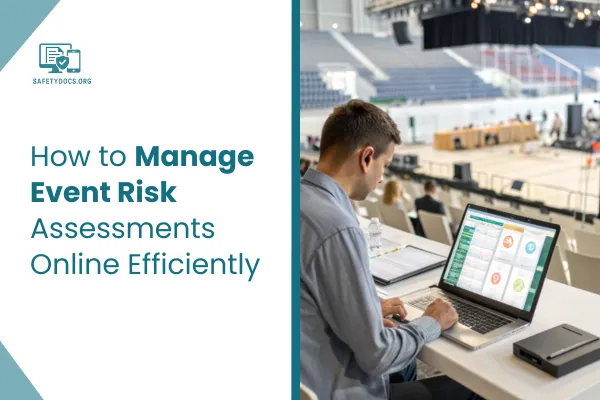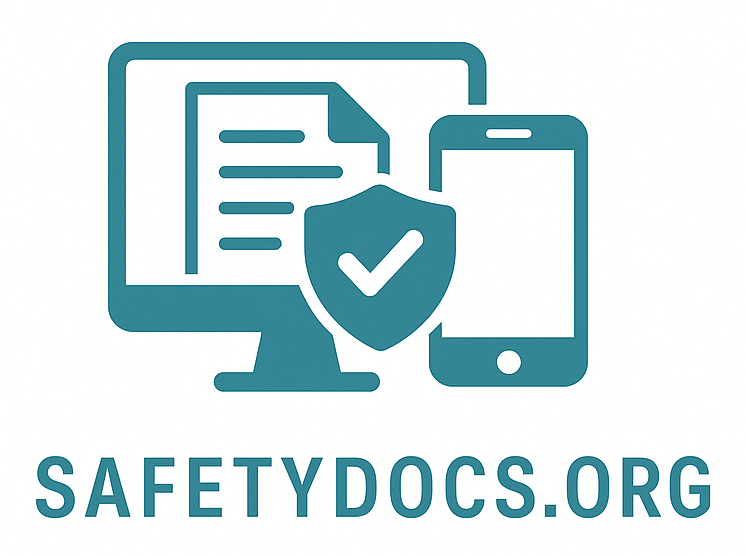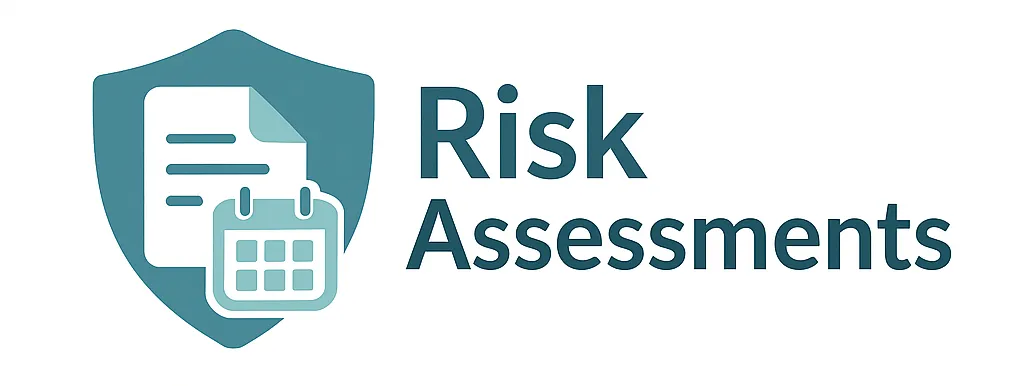
Manage Event Risk Assessments Online: Easy Steps
How to Manage Event Risk Assessments Online Efficiently
Managing event risk assessments online is a crucial practice for event planners seeking to ensure safety and seamless operations. Whether you’re organizing a small gathering or a large conference, understanding and managing risks ahead of time is crucial for minimizing potential issues during the event. Risk assessments are not just about identifying hazards but also developing mitigation strategies and ensuring that those strategies are executed effectively. Online tools have made this process more accessible, enabling event organizers to track, manage, and assess risks with ease. In this blog post, we’ll walk you through the process of managing event risk assessments online, from understanding the key components to using practical tools for a safer event experience.
What Are Event Risk Assessments?
Event risk assessments are systematic processes that identify and evaluate potential risks that could negatively affect the safety, security, and success of an event. These risks could range from environmental issues, such as severe weather, to more logistical concerns, like equipment failure, or even human-related risks, like medical emergencies. Risk assessments aim to prevent these risks from becoming issues by foreseeing them in advance and implementing strategies to reduce or eliminate their impact.
A practical risk assessment involves understanding the scope of the event, identifying the potential risks associated with each element, and determining the most effective ways to mitigate those risks. For example, if you’re organizing an outdoor concert, you would assess risks such as adverse weather conditions, crowd control issues, or sound system malfunctions. The goal is to ensure that the event runs smoothly, with minimal disruption, and that the health and safety of attendees, staff, and performers are prioritized.
Why Should You Manage Event Risk Assessments Online?
Managing risk assessments manually or through physical paperwork can be time-consuming, error-prone, and inefficient, especially for large-scale events. Online platforms, on the other hand, offer more efficient, organized, and real-time risk management. Here’s why managing event risk assessments online is beneficial:
1. Centralized Data: With an online platform, all your risk assessments are stored in one central location, making it easy to access, update, and share the information with your team.
2. Collaboration Tools: Many online platforms offer collaboration features that allow multiple team members, stakeholders, and vendors to contribute to the risk assessment process, making it easier to get feedback and insights.
3. Real-time Updates: If a new risk arises or a mitigation strategy is implemented, the online system allows you to update the information immediately, ensuring that everyone involved remains informed in real time.
4. Efficient Documentation Management: Online tools often allow you to attach documents, photos, or other supporting materials directly to the risk assessment, making it easier to maintain a comprehensive and detailed record.
5. Accessibility and Mobility: With online platforms, risk assessments can be accessed and updated from any location, which is particularly helpful for remote teams or when planning events in different places.
Steps for Managing Event Risk Assessments Online
1. Choose the Right Platform
Choosing the right online platform for managing event risk assessments is the first step. Several platforms specialize in event planning and risk management, such as RiskWatch, Event Risk Assessment, and Safety Management Software. These tools offer a range of features, including customizable templates, reporting capabilities, collaboration tools, and real-time notifications. When selecting a platform, consider one that aligns with your event’s size, complexity, and specific requirements. It’s also essential to ensure that the platform is user-friendly, as ease of use is crucial for efficient risk assessment management.
2. Identify Potential Risks
The next step is to identify all potential risks related to your event. These risks could include physical hazards (e.g., slip-and-fall accidents), technical failures (e.g., sound system malfunctions), security threats (e.g., crowd control issues), or environmental risks (e.g., extreme weather conditions). You can use an online platform to create categories for different types of risks and then identify specific threats within those categories.
For example, under "weather risks," you might list threats like heavy rain, strong winds, or extreme temperatures. Under "technical risks," you might list issues like equipment failure, power outages, or technical malfunctions. The key here is thoroughness—take the time to identify as many risks as possible to ensure you’re fully prepared for any situation that might arise.
3. Assess the Impact of Each Risk
After identifying the risks, the next step is to assess their potential impact. Not all risks are equally severe, so it’s important to prioritize them based on their possible consequences and likelihood of occurrence. This is where online tools can be invaluable. Many platforms come with built-in risk matrices, enabling you to assess the severity and probability of each risk.
For instance, a severe weather event might have a high likelihood but lower impact if you have a contingency plan in place. On the other hand, a technical issue with the sound system might have a low probability but a high impact, as it could completely halt the event. Once you’ve assessed the risks, you can rank them in order of priority and focus your resources on addressing the highest-priority risks.
4. Develop Mitigation Strategies
For each risk, develop strategies to mitigate or eliminate the threat. Some risks can be prevented through proactive measures, while others may necessitate a response plan if the risk materializes. For example, to mitigate weather risks, consider having a backup indoor venue or providing covered seating for outdoor events. For technical issues, you might have backup equipment or staff trained to troubleshoot common problems.
Online platforms often allow you to track your mitigation strategies, assign responsibilities to team members, and set deadlines for implementation. This ensures that every risk has a clear plan in place and that no strategy is forgotten or overlooked.
5. Share and Collaborate with Your Team
One of the significant advantages of using an online platform is the ability to collaborate with your event team. You can invite other team members, including security staff, medical teams, vendors, and contractors, to view and contribute to the risk assessment. This collaboration ensures that all aspects of the event are considered and that everyone is aligned regarding the risks and mitigation plans.
Online platforms also allow for easy communication and feedback. If a new risk is identified or if a mitigation strategy needs to be adjusted, the team can quickly update the assessment and notify others in real-time.
6. Monitor and Adjust Throughout the Event
Risk management doesn’t stop once the event begins. It’s crucial to monitor and adjust the risk assessment throughout the event. Online tools enable you to update the evaluation as new risks emerge or as the event unfolds. For instance, if the weather forecast changes during the event, you can update the risk assessment to reflect new weather conditions and implement additional precautions.
Real-time updates enable you to stay agile and respond to challenges quickly, ensuring the event remains safe and enjoyable for all involved.
Best Practices for Online Risk Assessments
To maximize the effectiveness of managing event risk assessments online, consider these best practices:
Regular Updates: Ensure that the risk assessment is regularly updated as new information becomes available or as changes occur in the event planning process.
Engage Key Stakeholders: Involve key stakeholders, such as security personnel, medical teams, and vendors, in the risk assessment process to ensure that all potential risks are identified and addressed.
Track Historical Data: Use historical data from past events to inform your risk assessments. If you've managed similar events before, you can anticipate risks based on previous experience.
Test Your Plans: Run simulations or mock drills to test your risk mitigation strategies. This will help you identify gaps in your plans and ensure you're prepared for unexpected situations.
FAQs
1. What is the purpose of an event risk assessment?
An event risk assessment helps identify potential hazards and risks that could impact the success and safety of an event. It enables planners to develop proactive strategies to mitigate these risks.
2. Why is it beneficial to manage risk assessments online?
Managing risk assessments online streamlines the process by providing centralized data, real-time updates, and easy collaboration with the team. This enhances efficiency and ensures timely adjustments.
3. How do I identify potential risks for my event?
To identify risks, consider factors such as the venue, weather, security, technical equipment, and health and safety. Online platforms can help categorize and effectively assess these risks.
4. Can online platforms help me track mitigation strategies?
Yes, online platforms allow you to track the progress of your mitigation strategies, assign responsibilities, and set deadlines, ensuring that no plan is overlooked.
5. What should I do if a new risk arises during the event?
If a new risk arises, update the assessment online to reflect the change. Online tools enable you to make real-time adjustments, ensuring the team remains informed and ready to act.
Conclusion
Managing event risk assessments online is a crucial aspect of event planning that ensures the safety and success of your events. By utilizing the right tools and adhering to best practices, you can effectively identify, assess, and mitigate potential risks. This not only helps to protect your attendees and staff but also ensures that your event runs smoothly without unexpected disruptions.
By leveraging online platforms for risk assessments, event planners can increase efficiency, foster collaboration, and enhance their ability to respond to unforeseen risks in real time. A proactive and well-managed risk assessment process is key to ensuring that every event, big or small, is safe, successful, and memorable.

